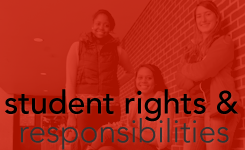Other Information
-
The following information may help you better understand frequently used college terminology.
Academic Calendar – The academic calendar lists important dates for students such as registration timelines, semester start/end dates, withdrawal dates, holidays, mid-semester date, scheduled breaks, and final examinations. Access current and future academic calendars at svcc.edu/academic-calendar.
Academic Program – A series of courses leading to the completion of a degree, certificate, or certification.
Associate degree – An award issued to a student that signifies completion of a two-year program. Six associate degrees are offered at SVCC.
Four of them are designed to transfer to a four-year college or university: the Associate in Art (AA), Associate in Engineering Science (AES), Associate in Fine Arts (AFA), Associate in Science (AS) degrees.
The Associate in Applied Science (AAS) degree is intended to lead to employment and is not designed to transfer.
The Associate in Liberal Studies (ALS) is a non-specialized, non-transfer degree designed to meet the individual needs of a student.
Canvas – The online platform that SVCC utilizes for its online courses, as well as to support instruction in some face-to-face courses.
Certificates – An award given at the completion of specific career training programs. Having a certificate means that the student is qualified to enter the workforce in a particular career area. A certificate requires fewer credit hours to complete than an associate degree.
Contact Hours – The number of hours a student is in class each week.
Co-Requisite – If a course has a co-requisite, a student must take the two courses during the same semester.
Course Code – Each course is assigned a six-digit code (three letters and three numbers), along with a two-character section to use when a student signs up for classes.
Example: Intro to Business, BUS 103 N.
The first three digits describe the subject (BUS for business), followed by the course number (103 for Intro to Business).
The last two characters (section) help to identify when the course is offered or type of course (examples N – for sections starting after 4:00pm,
OL – internet courses, SY – live streaming, HY – live streaming blended).
Course Delivery Options –
Live Streaming Courses - Classes meet off campus during regularly scheduled class times through a virtual meeting platform such as Google Hangouts. Shown as SY on your schedule.
Live Stream Blended Courses - Classes meet off campus during regularly scheduled class times through a virtual meeting platform such as Google Hangouts and meet on campus to complete any mandatory course work that cannot be completed virtually (i.e. labs/studio/clinicals/field experience or work). Shown as SY or HY on your schedule and with LB for on campus labs.
Traditional, Face to Face - Classes meet on campus. If deemed necessary, the academic continuity plan may be implemented, and classes will transition to a live stream or live stream blended format. These courses are limited to career technical courses such as welding or nursing. Shown as an alphabetic letter on your schedule.
Online - Classes that are fully online with no on campus or virtual class meetings. Some online courses may require in-person or recorded proctored tests shown as OL on your schedule.
Course Load – The number of credit hours a student takes during a semester. SVCC has set a maximum course load per semester (see College catalog). If a student wishes to register for more than this, he or she will need the approval of the Dean of Student Services.
Credit Hours – The amount of credit a student receives for completing a specific course. One lecture credit hour generally equals 50 minutes in class per week in a regular semester.
CRN – Course reference numbers are located in the schedule and are five-digit numbers that uniquely identify course sections. They are used during the registration and add/drop process.
Curriculum – All Sauk Valley Community College students are assigned a curriculum code that references their academic goal(s).
Dean’s List/President’s List – An honor’s notation on a student’s transcript identifying academic excellence for each term based on good academic standing and a minimum of 6 hours of college level coursework at a GPA of 3.5 or higher.
Drop/Add – The procedure by which a student may change his or her class schedule by dropping or adding a course.
Electives – Classes a student chooses to take that are not specifically required for graduation but will increase the student’s knowledge. Some electives may be required for graduation.
FAFSA – Free application for Federal Student Aid.
Fees – Course fees are assessed per credit hour based on the type of course.
Full-time Students – Anyone taking 12 credit hours or more during the fall or spring semesters, or six or more credit hours during the summer semester.
Grade Point Average (GPA) – The total number of points per credit hour earned (A=4, B=3, C=2, D=1, F=0), divided by college-level credit hours attempted. A 2.0 GPA cumulative is required to graduate.
Identification Numbers – Sauk Valley Community College provides a unique number that is used for identification and administrative purposes. This identification number is assigned at the time the student information form is processed by Admissions & Records. The student identification number can be found by accessing login information at svcc.edu/login.
In-District Resident – Someone who lives within the designated boundaries of Sauk Valley Community College District 506.
Internship – Provides an opportunity for a student to apply what he or she has learned in the classroom in a supervised work setting. If a program requires an internship, please contact the designated instructor early on so that they can assist in the process.
Part-time Student – Anyone taking 11 credit hours or less during the fall and spring semesters, or five credit hours or less during the summer semester.
Prerequisite – An introductory course that must be taken before the next level course. Prerequisites are listed in the catalog and in each semester’s class schedule.
Registration – The process of enrolling in classes.
Saukfest – The welcoming celebration each semester. These events encourage students to learn about the activities and clubs on campus as well as student resources.
Semesters – The fall semester lasts between August and December. The spring semester is from January to May. There is an eight-week summer session which begins in May. Check the academic calendar for details.
Skyhawk – The SVCC mascot; a mythical bird said to be strong, fierce, and driven yet cooperative with others.
Student Photo Identification Cards – Student photo ID cards are available in Admissions & Records and are valid for the current academic year. New ID cards are issued each academic year starting in the fall semester. Replacement cards are available for a fee.
Student Self-Service – Sauk’s Student Self-Service allows students to view personal information, grades, class schedule, billing information, and an unofficial transcript. If eligible, students may also register for classes online with Student Self-Service.
Syllabus – A document that lists a course’s objectives and requirements. Each instructor distributes a syllabus at the beginning of the semester, which serves as a “contract” and guides students to successful completion of the semester by outlining student expectations for the course.
Transcript – This document is a complete record of all courses taken and grades received at SVCC.
Transfer Programs – Curriculum that can be applied toward bachelor degree programs at four-year colleges and universities.
Transferring Credit to SVCC – Credit hours earned at another institution that can be applied toward a certificate/degree at SVCC. There is a maximum number of transfer credits that can be applied toward a Sauk certificate/degree. Please reference the College catalog.
Tuition – The amount charged for a course. Additional fees may apply.
Withdrawal – The process of discontinuing enrollment in a class or classes after the registration change period. (see academic calendar). A grade of “W” is recorded on the student transcript. No refund of tuition fees is given. Students can initiate a withdrawal “W” from a class until a specified date in the semester (see academic calendar). After that time, only the instructor has the authority to grant a withdrawal from a class.






